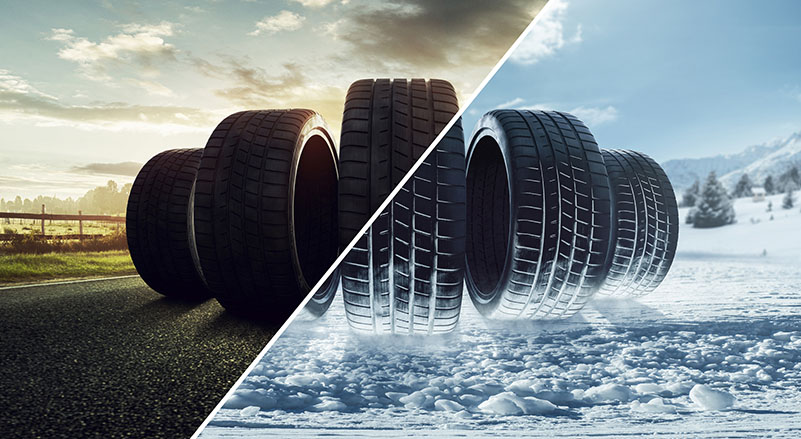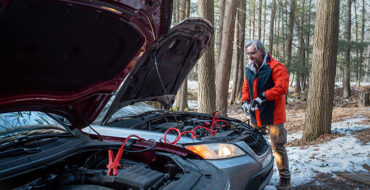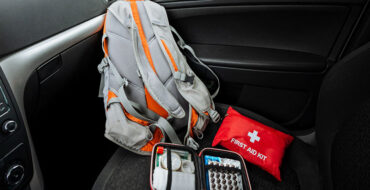Whether you’re driving in Halifax, Winnipeg, Vancouver, or Yellowknife, knowing when to change your tires is a matter of safety, comfort, and cost savings. Canada’s varied climate — from bitter cold winters to hot summer roads — puts extra stress on your tires. Here’s how to know when it’s time to swap them out, and what signs to watch for.
When to Change Tires No Matter Where You Are in Canada

1. Minimum Legal Tread Depth
One of the most universal rules across Canada is that you must not drive with tires that have worn past their legal tread depth. In Canada, tires should be replaced when their tread is worn to the level of the wear bars/indicators, usually at 1.6 mm (2/32 inch) of tread remaining.
Driving on tires at or below this limit greatly increases the risk of hydroplaning, reduced grip in wet conditions, and longer braking distances.
2. More Conservative Thresholds for Winter Driving
Because winter driving demands more from your tires in terms of grip on snow and ice, many safety experts and manufacturers recommend replacing winter or snow tires earlier — well before the 1.6 mm limit. In fact:
- Transport Canada advises that winter tires should not be used when they approach 4 mm (≈ 5/32”) of tread.
- In British Columbia, a legal winter tire must maintain at least 3.5 mm of tread.
In short: for all-season or summer tires, you can wait until closer to the wear bars, but for winter tires, replacing them when tread depth drops to 4 mm or even earlier is wise for safety’s sake.
3. Age of the Tire — Don’t Ignore the Clock
Tread wear is not the only enemy of tire health. Over time, rubber degrades, sidewalls can crack, and a tire’s internal structure can weaken. Even if a tire still shows adequate tread, age can make it unsafe. Some manufacturers and mechanics recommend replacing tires every six years as a general rule, especially if the vehicle sees harsh conditions. Check the DOT/manufacturing code on your tire sidewall (a four-digit number indicating week/year of manufacture) and track the tire’s “birthdate.”
4. Visible Signs: Cracks, Bulges, Cuts & Uneven Wear
Even before tread runs out or age becomes critical, visual cues often tell you a tire is failing. Replace tires right away if you see:
- cracks or splits in the sidewall or tread
- bulges or blisters (indicating internal cord separation)
- embedded objects, gouges, or deep cuts
- uneven or “cupped” wear patterns, which can stem from alignment, suspension, or balance issues
- excessive vibration or handling issues that weren’t present before
These defects often signal structural compromise and can lead to blowouts.
5. Seasonal Swap Timing
In Canada, most drivers use winter tires during cold months and summer/all-season tires during the warmer season. If you live in any part of Canada where snow and freezing temperatures are expected, the timing of the swap matters as much as the condition.
- A common guideline is to switch to winter tires when you see seven consecutive days with average highs below ~7 °C (45 °F).
- Likewise, return to summer/all-season tires once you get seven straight days above ~7 °C.
- Some provinces have mandated windows for winter tire use. For example, in Quebec, winter tires must be used from December 1 to March 15.
- As a safety margin, many Canadians aim to get winter tires on by late October or early November, and remove them by mid-April — though local climate influences these dates.
Be cautious: leaving winter tires on in warm weather increases wear and risks blowouts. In addition, delaying their fitting before winter can compromise grip in early snow or ice.
6. Mileage / Use Patterns
How much and where you drive also impacts your tire-wear clock. Someone who drives long distances on highways will wear tires faster than a mostly urban driver. Rough roads, heavy loads, off-road driving, frequent braking, and aggressive cornering all accelerate wear.
While there’s no hard-and-fast “replace after X km” rule applicable to all, many drivers see major replacement needs between 50,000–100,000 km, depending on tire quality, maintenance, and conditions.
7. Preventive Rotation, Maintenance & Monitoring
To get the most life out of a set of tires—and delay the need for replacement—do the following:
- Rotate tires every ~8,000–10,000 km (or as recommended by the vehicle’s manual) to even out wear.
- Maintain proper inflation (cold pressure). Underinflated or overinflated tires wear faster and unevenly.
- Check alignment and balance periodically. Misalignment eats into tread life.
- Inspect tires at least monthly for damage, embedded debris, or irregular wear.
- When swapping tires, mark which tire came from which position so you can track wear patterns.
Final Thoughts
No matter where you are in Canada — from the Pacific coast to the Arctic Circle — the principles for when to change tires remain the same. Regular inspections and timely changes ensure safety, preserve performance, and can ultimately save you money. To find the right tools for changing your winter tires, visit NAPACanada.com or visit your local NAPA Auto Parts store for more information.



